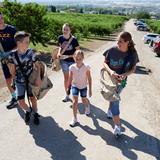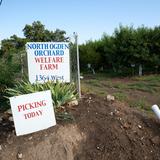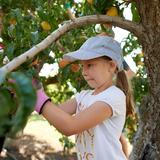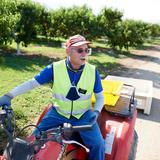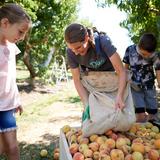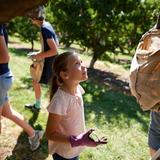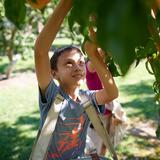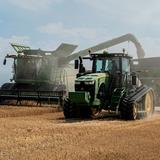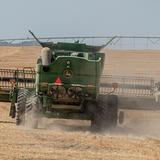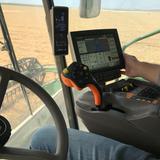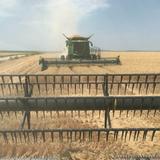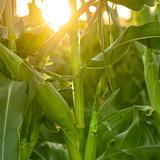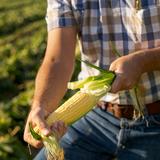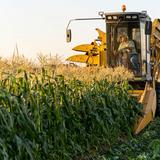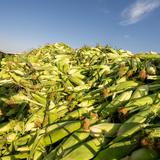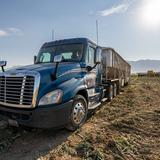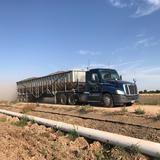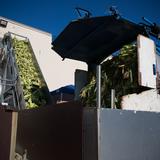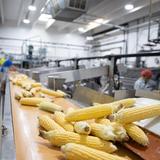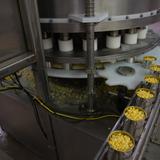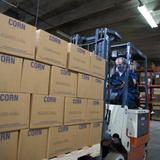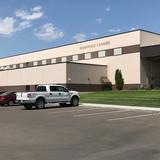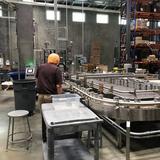From farm to table, The Church of Jesus Christ of Latter-day Saints is increasing its efforts to provide food for those in need during the COVID-19 pandemic and recent natural disasters. New crops have been harvested on Church farms in the United States, processed at its canneries and sent to the Bishops’ Central Storehouse in Salt Lake City for national distribution.
| Temple Square is always beautiful in the springtime. Gardeners work to prepare the ground for General Conference. 2012 Intellectual Reserve, Inc. All rights reserved. | 1 / 30 |
“We’ve been incredibly blessed this year with our harvest,” said Matthew Cox, manager of agricultural production and storage for the Church’s Welfare and Self-Reliance Services Department.
In 2020, deliveries have been shipped from coast to coast to local food banks in Oregon and California following recent wildfires and to areas such as New York that were hit hard by the pandemic.
Trucks from the Church’s own transportation system, Deseret Transportation, are crisscrossing the country, hauling tens of millions of pounds of food to bishops’ storehouses and local food pantries.
“We're seeing a lot of distribution in the Western U.S. and Canada. We're also doing a lot in the Eastern Seaboard states where the demand was just so high, and they got hit so hard with COVID-19,” said Rick Long, welfare manager for the North America Northeast Area.
“The Lord blessed us this year with bounteous crops, and as a result, we're able to distribute these products where they're most needed,” Long said.
In addition, production on the farms has been ramped up and the surplus food has been given to those in need.
“We’ve seen an increase of what we’re trying to accomplish on the farms,” said Cox. “We had plans of what we were going to do, and when the pandemic arrived we had to adjust all of our assignments … both to cover the additional storehouse needs, but also in our efforts to do what we can to help others outside of the Church.”
Where there is not a bishops’ storehouse, Long said local bishops are authorized to use fast offering funds at grocery stores to purchase goods and services for those who need assistance.
Harvesting the Crops
The Church has canneries in Utah and Idaho to process fruit and vegetables grown on Church-owned farms. Crops include green beans, sweet corn, peaches, pears and apples. In southeastern Idaho, Church farmers grow wheat, sugar beets and potatoes. Grapes are dried to make raisins in California. Peanuts are made into peanut butter at a Church-owned cannery in Houston, Texas.
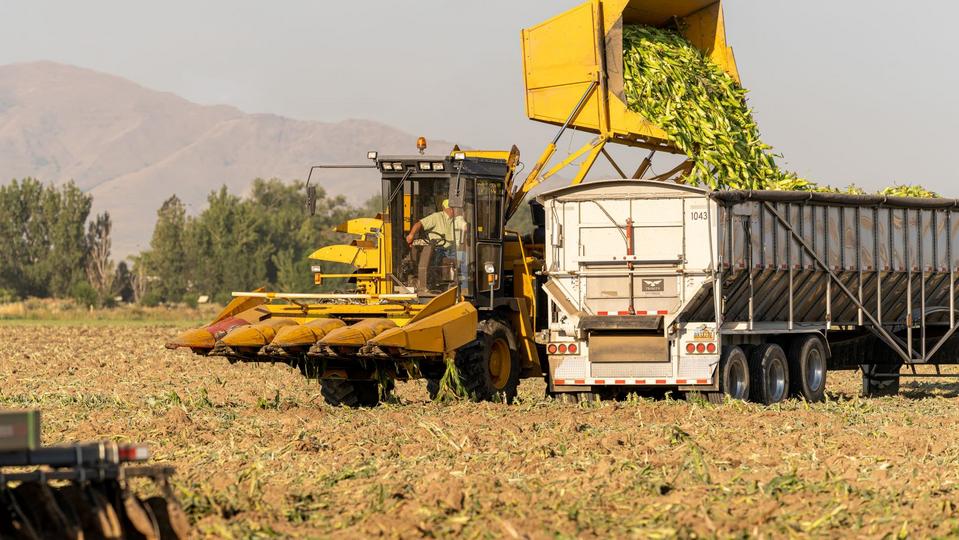
Field to Table - Corn
Sweet corn is harvested on a Church farm in Layton, Utah, on Tuesday, August 18, 2020. From the farm, the corn goes to be processed at a cannery and stored at a warehouse until it's shipped to bishops' storehouses and local food pantries across the country.2020 by Intellectual Reserve, Inc. All rights reserved.“Our corn harvest is having some great yields,” said Cox during the harvest in mid-August. The crop was processed at the Murray Cannery, which will be consolidated with the cannery in Harrisville at the beginning of the year.
John K. Green has managed the Church’s crops in Layton, Syracuse and West Point, Utah, for the past 40 years.
“This is the only farm that the welfare system has that grows the corn and the beans, so sometimes the weight of that’s on us to produce a crop,” said Green, who has two other managers and other staff on his team.
“We’re just out doing what a regular farm does, nothing special. But my office is a pickup because we are always chasing from field to field,” he said.
“This year we had a bean crop that the yield was so tremendous. I grew up raising beans … and there’s no explanation for the reason these beans yielded so much,” Green reported.
Long said the green beans that were canned in July are already being shipped across the country.
“There’s a lot of peace knowing that you’ve done everything you can and that you’re actually on the Lord’s farm and you’re growing His crops for His people,” said Dave Nielson, Church farm manager in Idaho Falls, Idaho.
“We grow wheat, potatoes, alfalfa and canola,” said Nielson. “A lot of the wheat makes it into the bishops’ storehouses and to the Deseret Mill. … The canola is simply a rotation crop, as well as the alfalfa that gets sold to local growers.”
Nielson said the Church grew potatoes on about 300 acres of land in Idaho Falls this year.
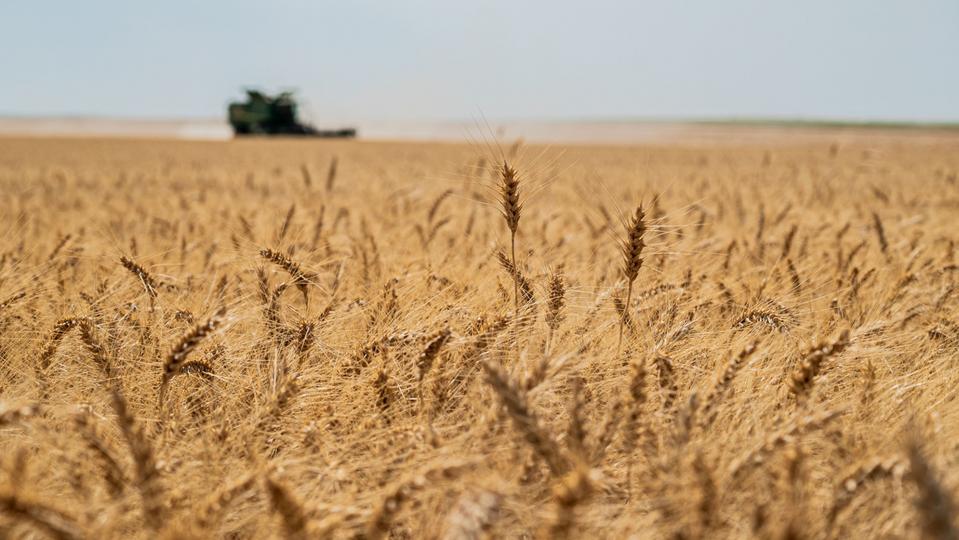
Field to Tables - Wheat
A combine harvests hard red spring wheat at a Church farm in Idaho Falls, Idaho, on Wednesday, August 26, 2020. 2020 by Intellectual Reserve, Inc. All rights reserved.Church workers and service missionaries harvested the hard red spring wheat crop on about 2,500 acres at the end of August with state-of-the-art combines and other equipment.
“This is just a good average year,” said Nielson. “We’re really happy with the yield that we’ve got coming off the field, and we’re happy with the quality of the wheat that’s coming off. It has been a good year.
“Because we’re under irrigation, I think we just grow a really good quality wheat,” he said.
Once harvested, the wheat is stored in silos in Idaho until it is shipped to the Deseret Mill and Pasta Plant in Kaysville, Utah, north of Salt Lake City. Some of the wheat is ground into flour to make bread.
Nielson said up to six service missionaries work on the Idaho Falls farm at any given time, donating over 3,000 hours of service every year.
“I get to run the auger, which puts grain into the silos, and then I get to drive the 10-wheelers,” said Sister Kaybree Bevell, a service missionary from Eagar, Arizona. “I’m here and I get to serve the Lord, so it’s definitely worth it.”
“I get here at eight o’clock in the morning,” said Elder Paul Steele, who participated in his third wheat harvest while serving as a senior missionary. “We service the machines. … Just as soon as it’s warm enough, we start harvesting, and then we go until after dark. Once it starts cooling down, the grain gets a little bit difficult to harvest.”
Elder Steele continued, “It all goes into the Church’s purposes of taking care of your neighbor. And if you can be a part of that in some small way, it just makes you feel good. It’s the Lord’s work, and I deeply believe that it’s a good cause.”
Growing Peaches: A Family Affair
Volunteers showed up at the Church’s peach orchard in Pleasant View in northern Utah in late August to harvest the peaches.
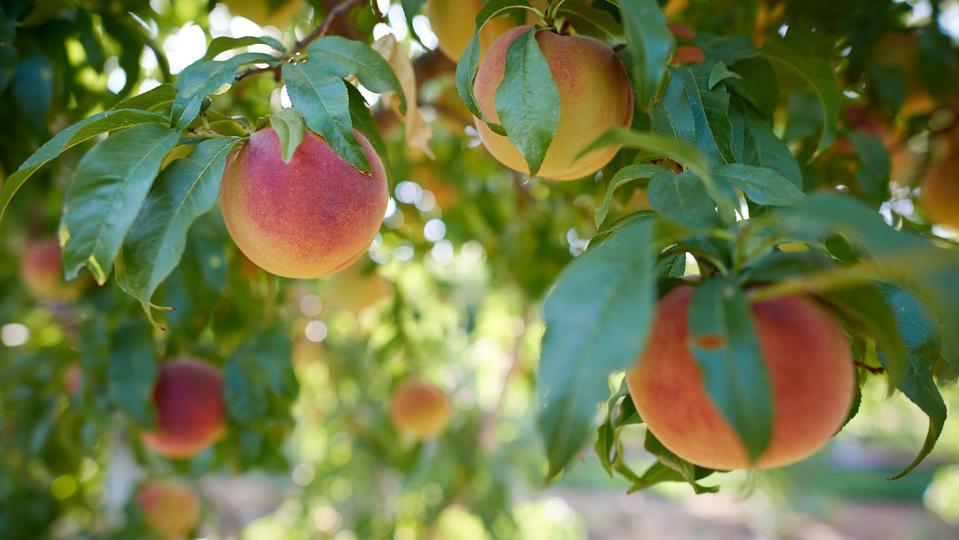
Field to Tables - Peaches
Peaches are ready for picking at a multistake peach orchard in Pleasant View, Utah, on Tuesday, August 25, 2020. 2020 by Intellectual Reserve, Inc. All rights reserved.“This is a pretty good harvest. It's not our best harvest by any measure. But, you know, we're just grateful that we have a harvest,” said Bruce Liston, who has managed the Church’s peach orchard for the past 14 years.
Liston explained that many of the peach crops in the nearby communities of Brigham City, Perry and Willard were frozen this year.
“I hope to get around 500,000 pounds [of peaches] this year. Some years we get up to 800,000-plus pounds,” said Liston. “We cannot produce enough for the canneries this year. We wish we could, but it's just going to take everything we've got, and the need is huge this year.”
Liston has participated in many peach harvests in northern Utah in his lifetime.
“This farm here belonged to my great-great-grandfather,” he said. “The pioneers came here and planted trees. And it's a beautiful place for trees. It has a natural airflow.”
Latter-day Saints from multiple stakes in the area provide the labor to harvest the peaches.
“The volunteers come out and they do all the pruning, the thinning, all the painting of the trees, all the work around here,” said Liston.
“You feel blessed and you feel renewed by coming out and actually doing something physical. And it's a beautiful place to do it,” he added.
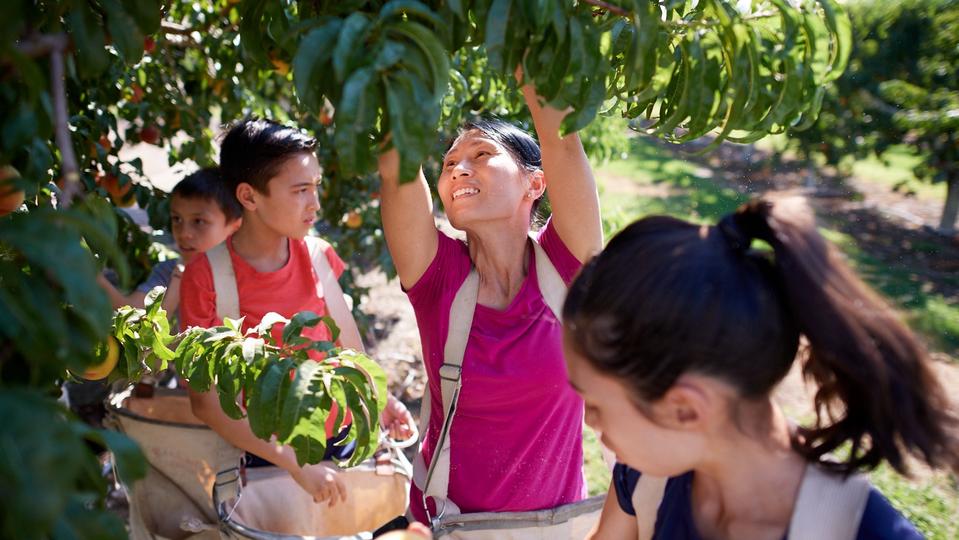
Field to Tables - Peaches
Huong Dye and her three children pick peaches at a Church farm on Tuesday, August 25, 2020. 2020 by Intellectual Reserve, Inc. All rights reserved.“It's perfect to be outdoors and to be able to enjoy the sunshine and to get a little exercise,” said Huong Dye, who brought her three children with her to pick peaches.
“It's hard to find service projects that my little ones can do. And this is something that we can all do, especially right now,” expressed Dye.
“I like that I can come with my family, and it's just something simple we can do, yet it means a lot,” said 14-year-old Sarah Dye. “I like just going with my brothers and finding the right peaches and picking them out. It just makes me feel good to do the service.”
Loris Orton of North Ogden and her six children volunteered at the peach orchard. “Especially in these times, I feel like it's important to take time out of our lives to give to others and remember that there are others who have circumstances that are much worse than ours.”
“We've been blessed to have food on our table. And the least we can do is give food to others or at least be a part of the process,” said Orton.
The outing was good practice for her son, Logan, who is preparing to serve a full-time mission for the Church.
“This is all service-oriented, and a lot of [serving a] mission is service to others and just leading through a Christlike example,” said Logan Orton.
“I think it's very important to be out here because it helps a lot of people. … I just feel blessed to be able to actually know that I'm helping someone,” he expressed.
Planning Ahead
Church farmers are already planning their crops for next year.
“The middle of March is when we really start getting busy. We stay busy through the winter on maintenance and all the equipment. … We’re busy all the way until basically Thanksgiving,” said Nielson.
“With our efforts to do what we can to not only take care of the Church’s needs but help others, and both that and replenishing some of our inventories that we’ve drawn down a little bit over the pandemic, we think that the demand for our products will be up in the next year,” Cox projected.
“We anticipate that we’ll try to keep this elevated pace at least to a certain degree into the coming years,” he said.



